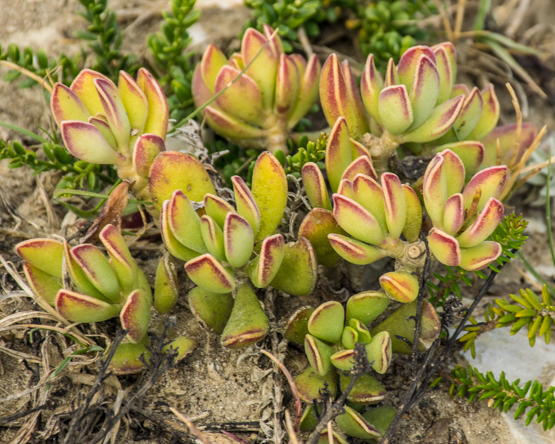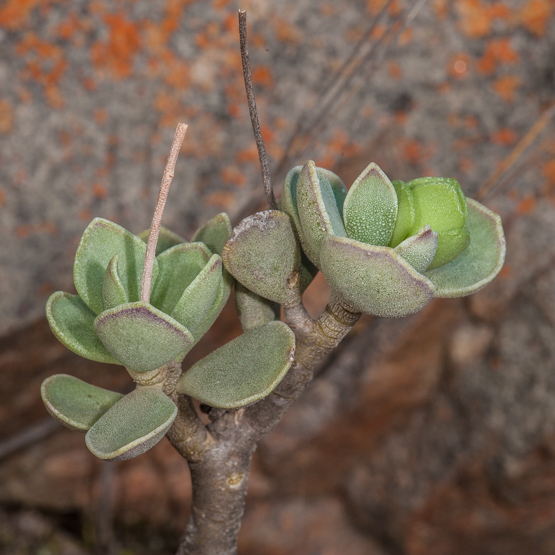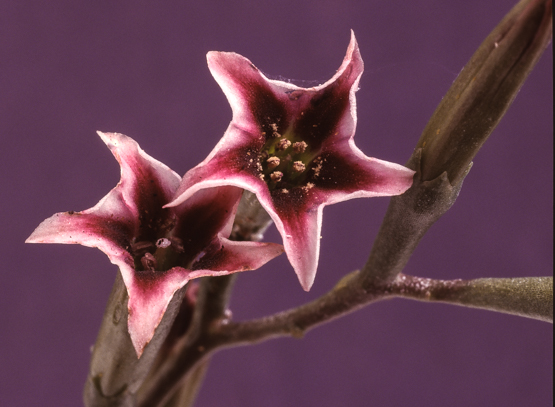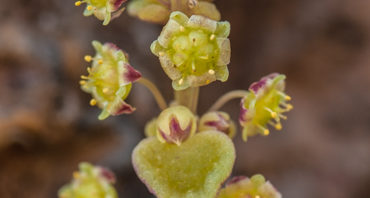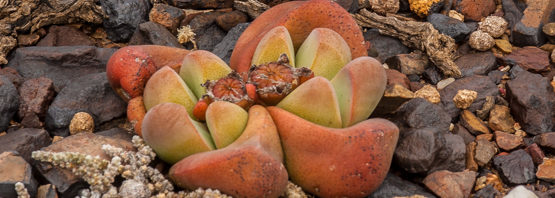At the moment this post is published, I will be on my way to Madagascar.
Many years after my first visit there (1997), a return visit became more and more alluring (making hay while the sun shines and all that).
While on the previous occasion my wife and I visited the South, this time we will go in the opposite direction and I’m quite curious to find out what goodies are waiting there to be photographed.
At the end of the month I hope to be back safe and sound, and with many good memories.
Conophytum meyeri (part 2 of 2)
The first two pictures were taken on 6 Oct. 2011 and the third one on 12 July of the same year. Picture # 4 shows a plant in cultivation.


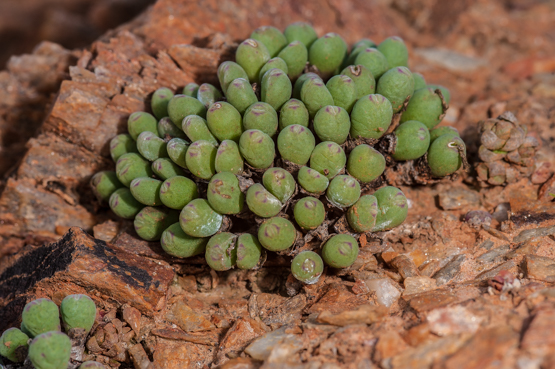
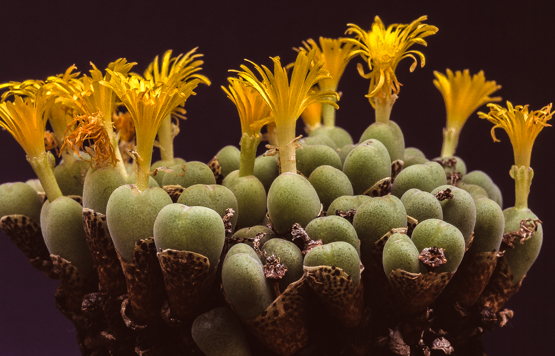
Conophytum meyeri (part 1 of 2)
When a species has many synoniems (16 in this case), one cannot help but wonder what that means. There may be a couple of reasons for the plethora of names, but in this case the most likely one is the species being so highly variable. Understandably, this makes it often difficult to positively identify it. The situation is further complicated by the fact that the species often grows together with C. bilobum and hybridizes with it, resulting in swarms of plants with intermediate characters.
The plants form small or large cushions (up to 30 cm in diameter), which may be straggly or neatly domed.
The bodies are up to 2.5 cm long and 1.5 cm in diameter, heart-shaped to nearly spherical, usually slightly bilobed and sometimes slightly keeled. The keel lines are often red, the fissure zone has small, windowed patches on either side and the skin is pale green to yellowish green or greyish green, smooth or velvety-papillate and often spotted.
As a rule the flowers are yellow (rarely pure white), with petals often drooping. They appear in March -June.
The plants occur mostly in the western Richtersveld on granite, gneiss, sandstone or quartz slopes -often in shade.
All 3 pictures taken 6 Oct. 2011.
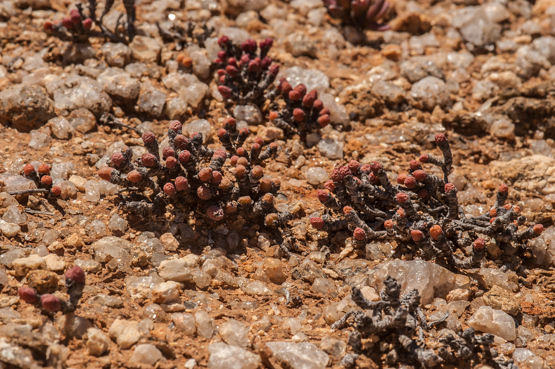
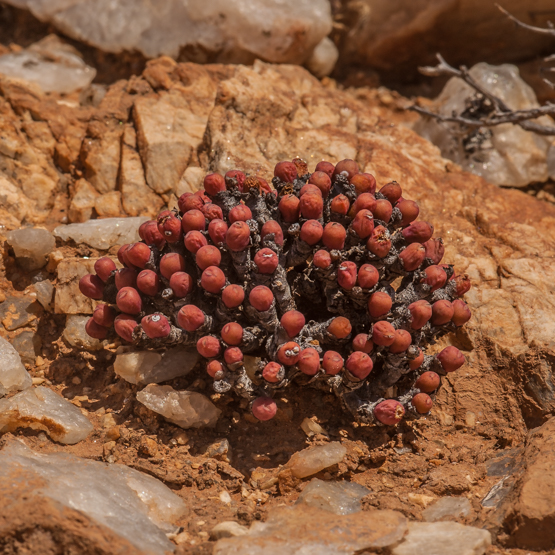
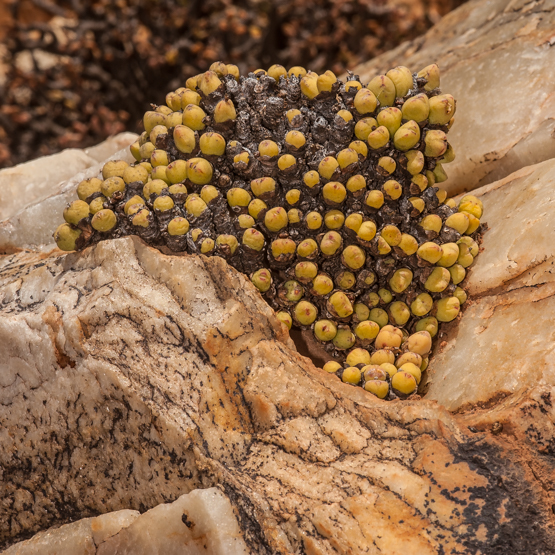
Cephalophyllum tricolorum
I suppose that few people will get excited about a Cephalophyllum without flowers, but when flowers are present, it is quite a different story. In this case, the flowers are up to 5 cm in diameter, with yellow petals and orange stamens with brownish to purple tips. They appear from June through September.
The plants are to a meter in diameter and have a very compact centre and creeping branches. The leaves are rather long (8-12 cm) and round with trigonous tips; dark green to greyish.
The fruits have stalks that don’t last very long and are classified as tumble fruits.
The species occurs in dry fynbos and low open karroid bush on sandy to loamy soils from the Knersvlakte to Nieuwoudtville and Clanwilliam. Most of the rainfall occurs in winter (100-200 mm per year).
Because the plants can quickly colonize a site, it can be a very useful species, but unfortunately it is reluctant to flower in cultivation.
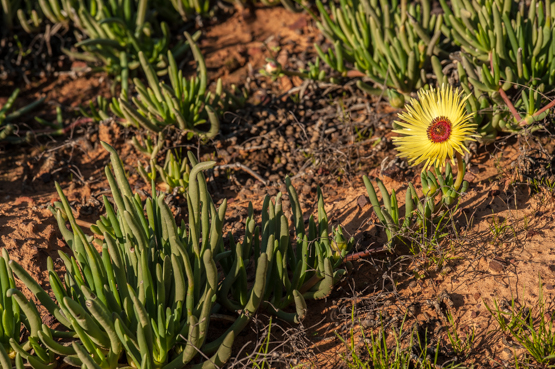
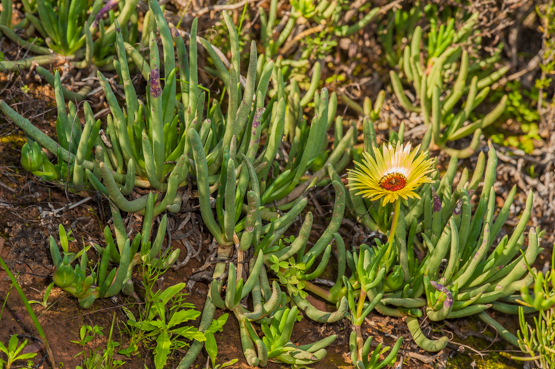
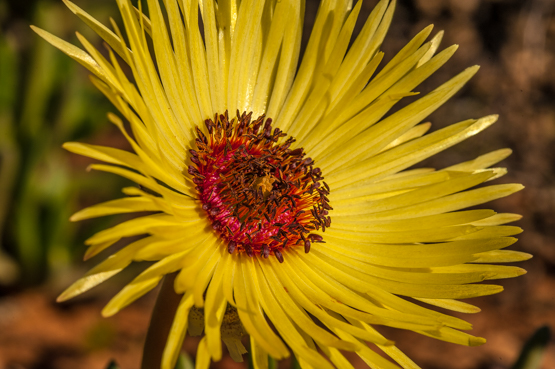
Crassula nemorosa (part 2 of 2)

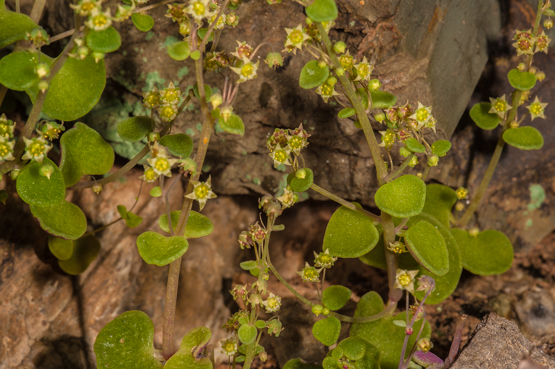

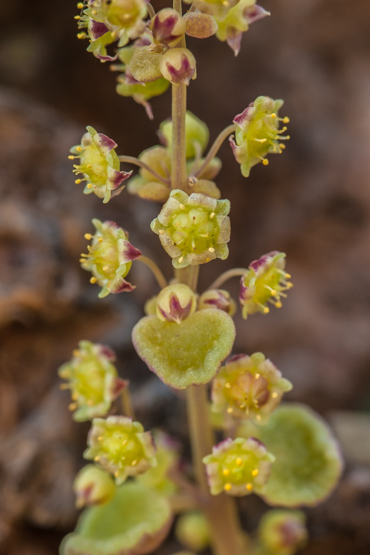
Crassula nemorosa (part 1 of 2)
These charming little plants have erect or sprawling stems , 4-10 (-15) cm long.
They are geophytes, with many small tubers (rarely over 0.5 cm in diameter).
The slightly fleshy leaves are grey-green or greyish brown and the star- to cup-shaped flowers are pale yellowish-green to brown with 2-3.5 mm long lobes.
While the flowers usually appear between June and August, depending on rainfall this may also happen at other times.
The distribution area ranges from South Namibia to the Little Karoo and the Eastern Cape, but the plants only occur in sheltered spots on rocky slopes and in crevices.
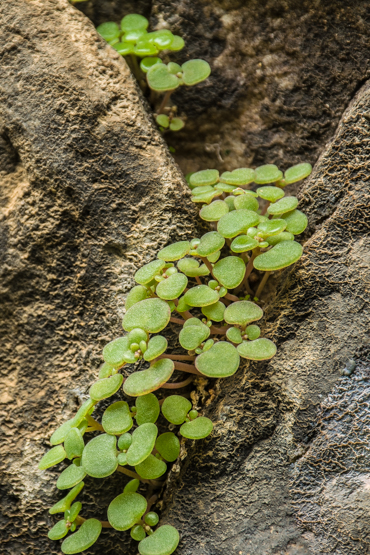

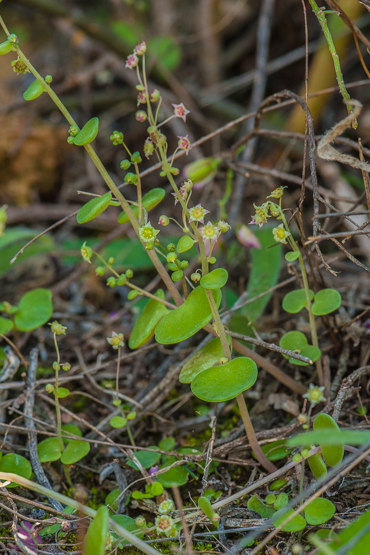

Aloe ballyi
This very distinctive species normally produces one single stem up
to 8 m tall and only 10-15 cm thick. Sometimes, plants branch from the base and form large shrubs.
Each stem bears about 25 leaves, up to 90 cm long and grey-green on both sides; the sap is poisonous.
The inflorescences are much-branched, with carmine to reddish-orange flowers.
The species is found in more or less dense bushland and thickets along rivers in
southern Kenya and northern Tanzania at altitudes between 900 and 1500 m.
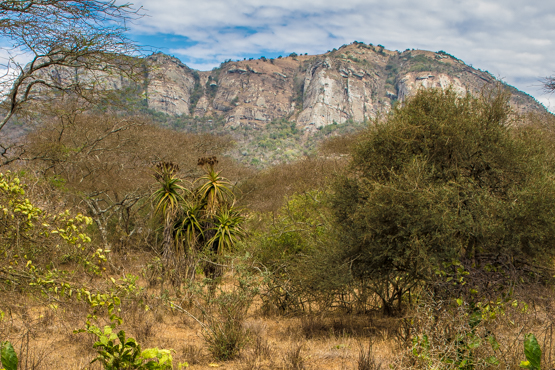
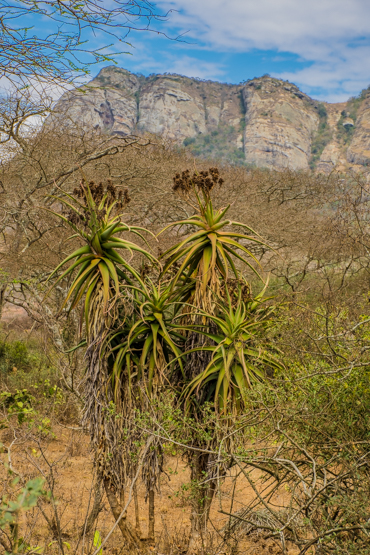
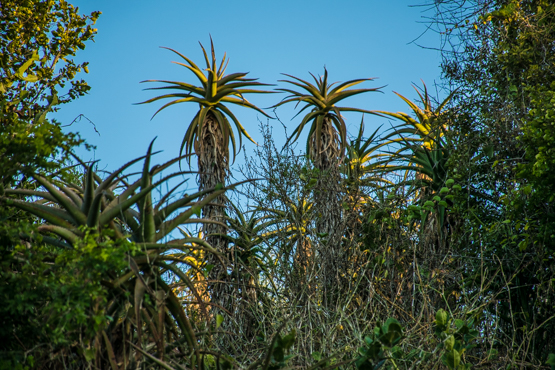

Tanquana prismatica (part 2 of 2)
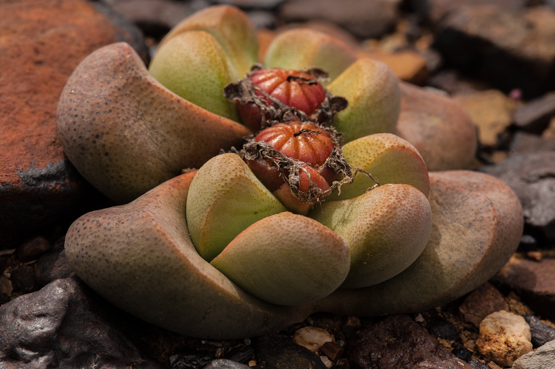
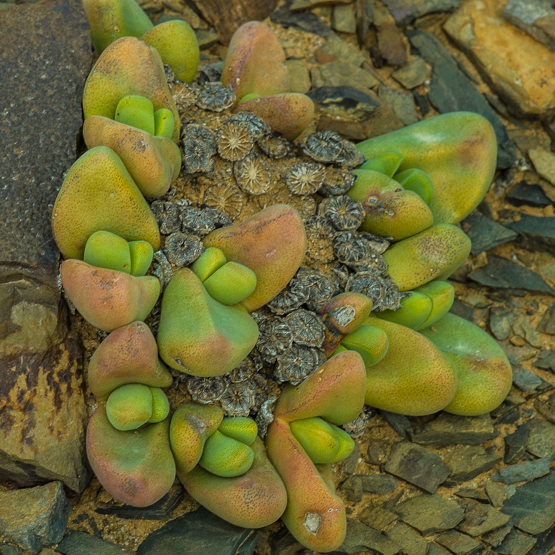
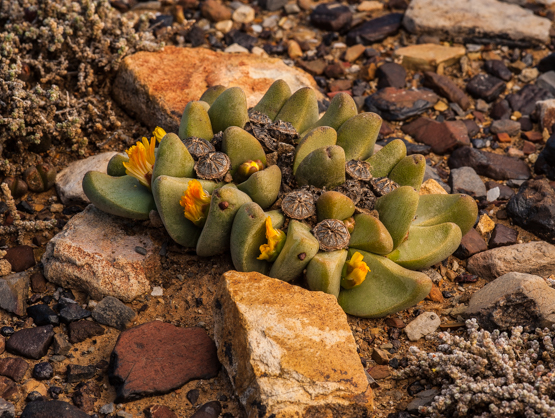

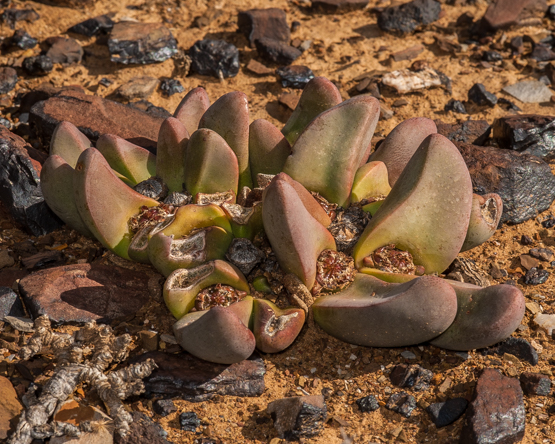
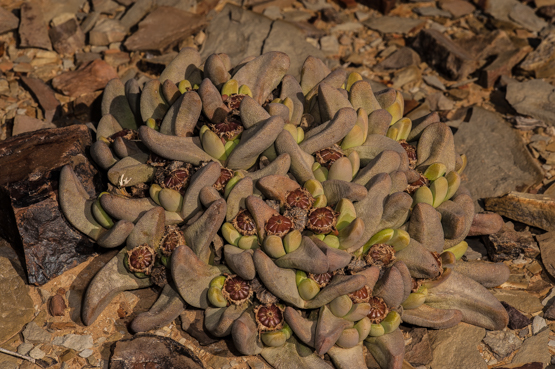
Tanquana prismatica (part 1 of 2)
There are only three species of Tanquana; the other two being T. hilmarii and T. archeri (which I have never seen). All three used to be called Pleiospilos because of the dotted leaves, but actually the two genera are not closely related.
Over time T. prismatica may form clusters of up to 30 branches. The leaves are unequal, egg-shaped in young plants but more oblong later, with a length of 2.5-4 cm.
The strongly scented flowers are to 4 cm in diameter and appear from February to May.
The plants are not uncommon on stony flats in the Ceres-Laingsburg area, where they receive 100-150 mm rain per year, mainly in winter.
Below are some pictures to give you an idea of the conditions in the plants’ habitat.
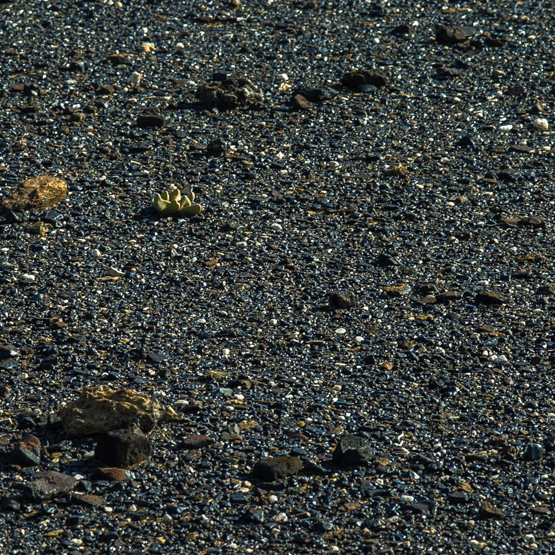
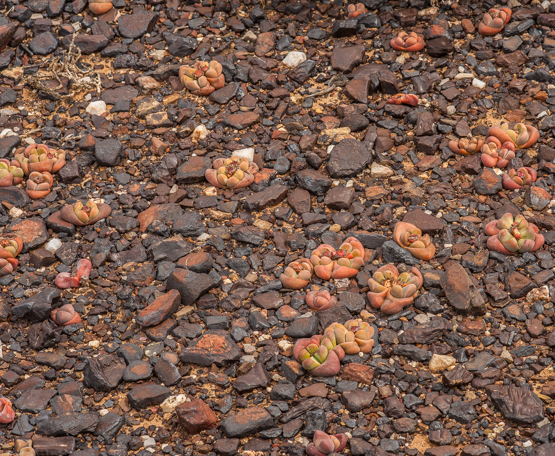
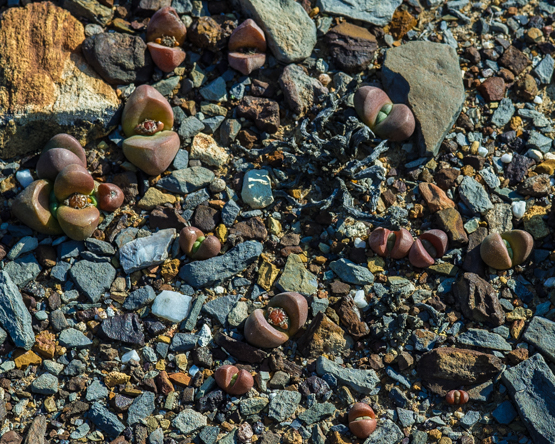
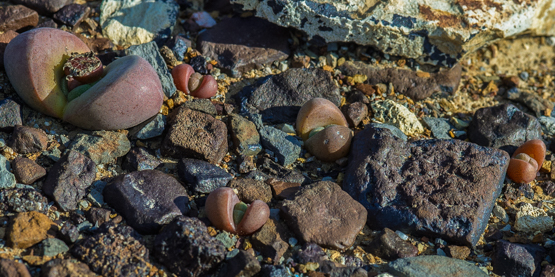
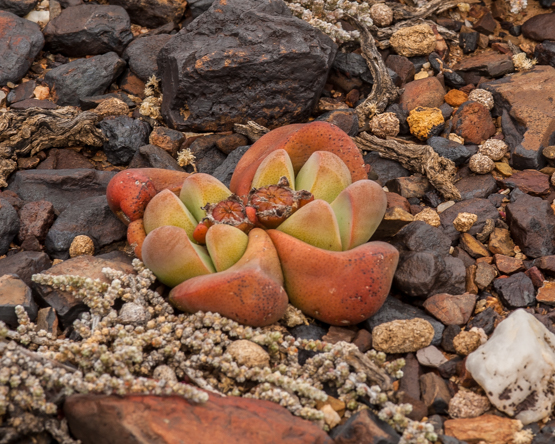
Adromischus caryophyllaceus
In contrast to their near relatives Cotyledon, Tylecodon and Kalanchoe, almost all Adromischus species have rather insignificant flowers.
This species is an exception with flowers 1.5 cm in diameter at the widest part (the biggest in the genus). They are white or pink, with a pink to purple midstripe on the lobes, and appear in summer and autumn (Jan.- April).
The plants are up to 11 cm tall and to 14 cm in diameter, with leaves up to 3.5 cm long and to 2.3 cm wide.
They are widespread from Robertson to Uitenhage and in the coastal plain south of the Little Karoo* , usually on sandstone slopes among bushes.
*The first picture was taken at Cape Agulhas, Africa’s southernmost tip.
